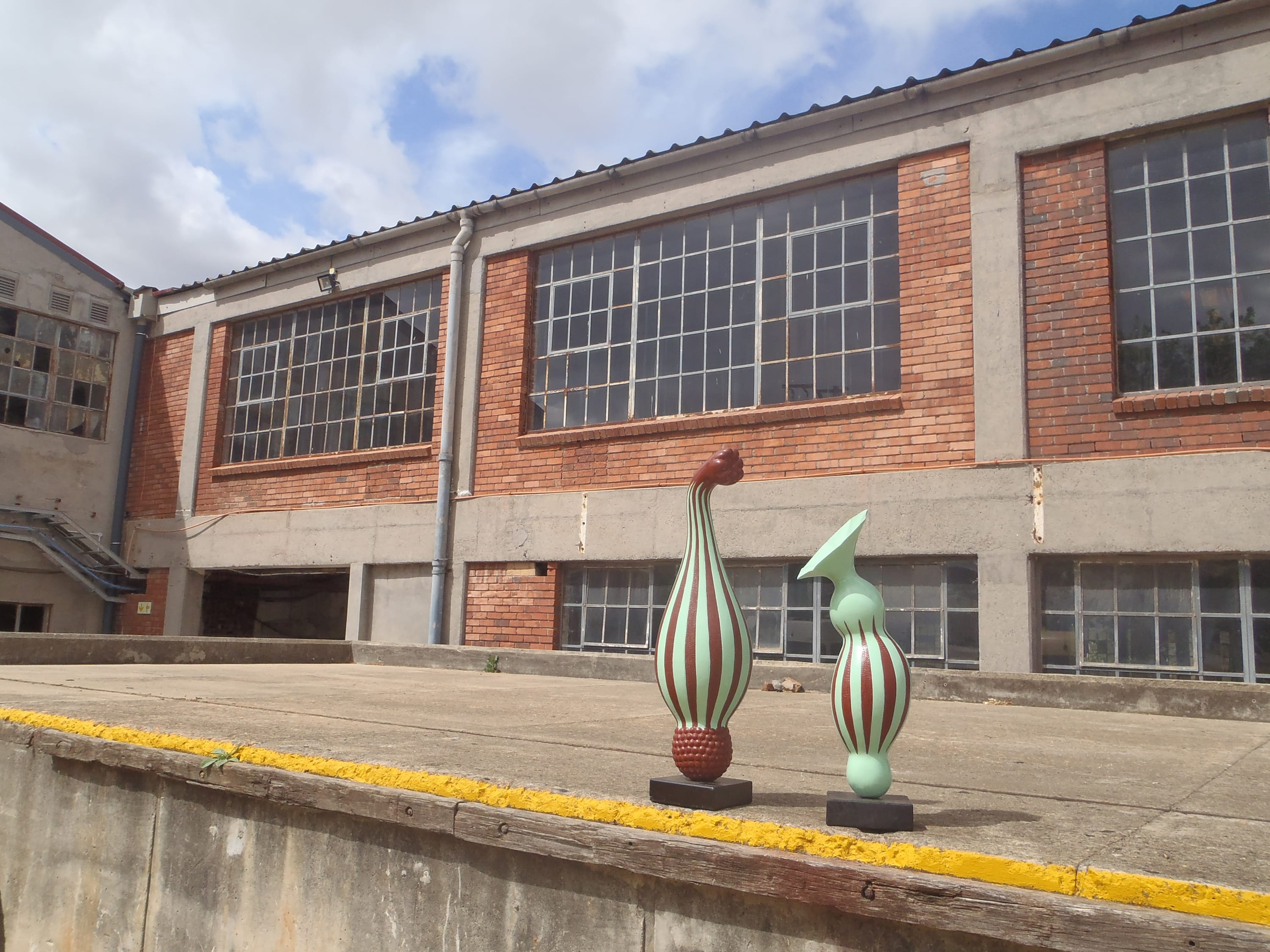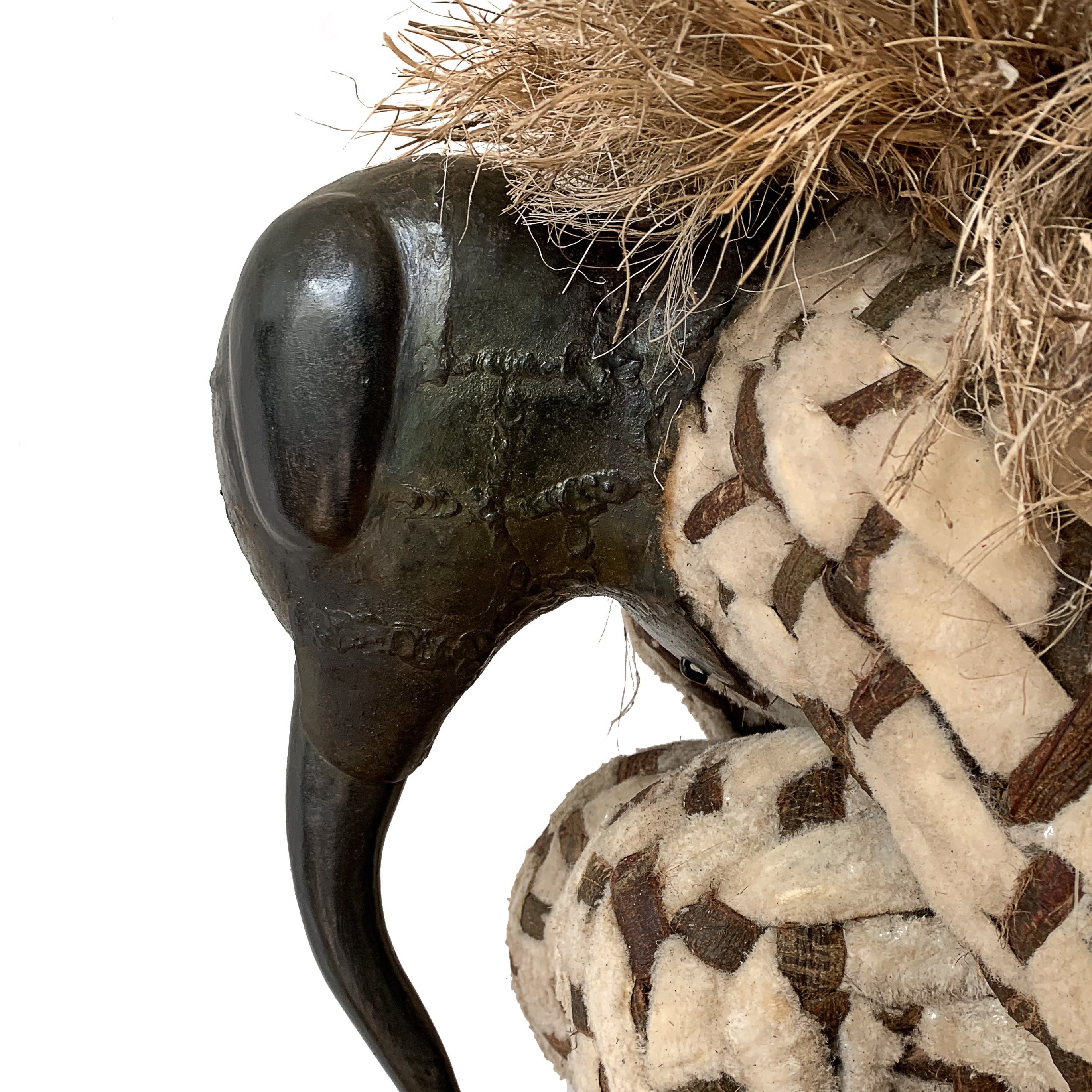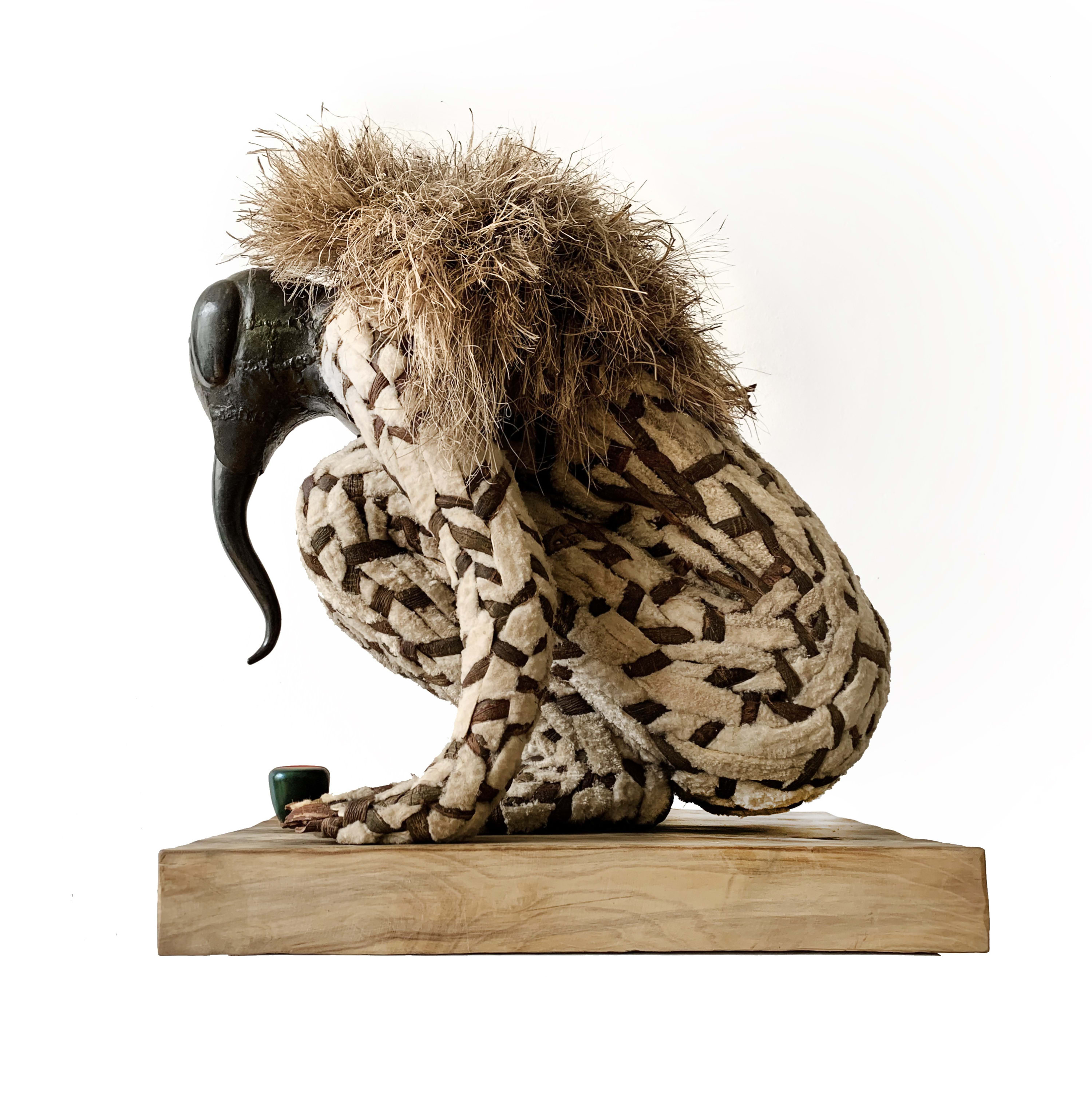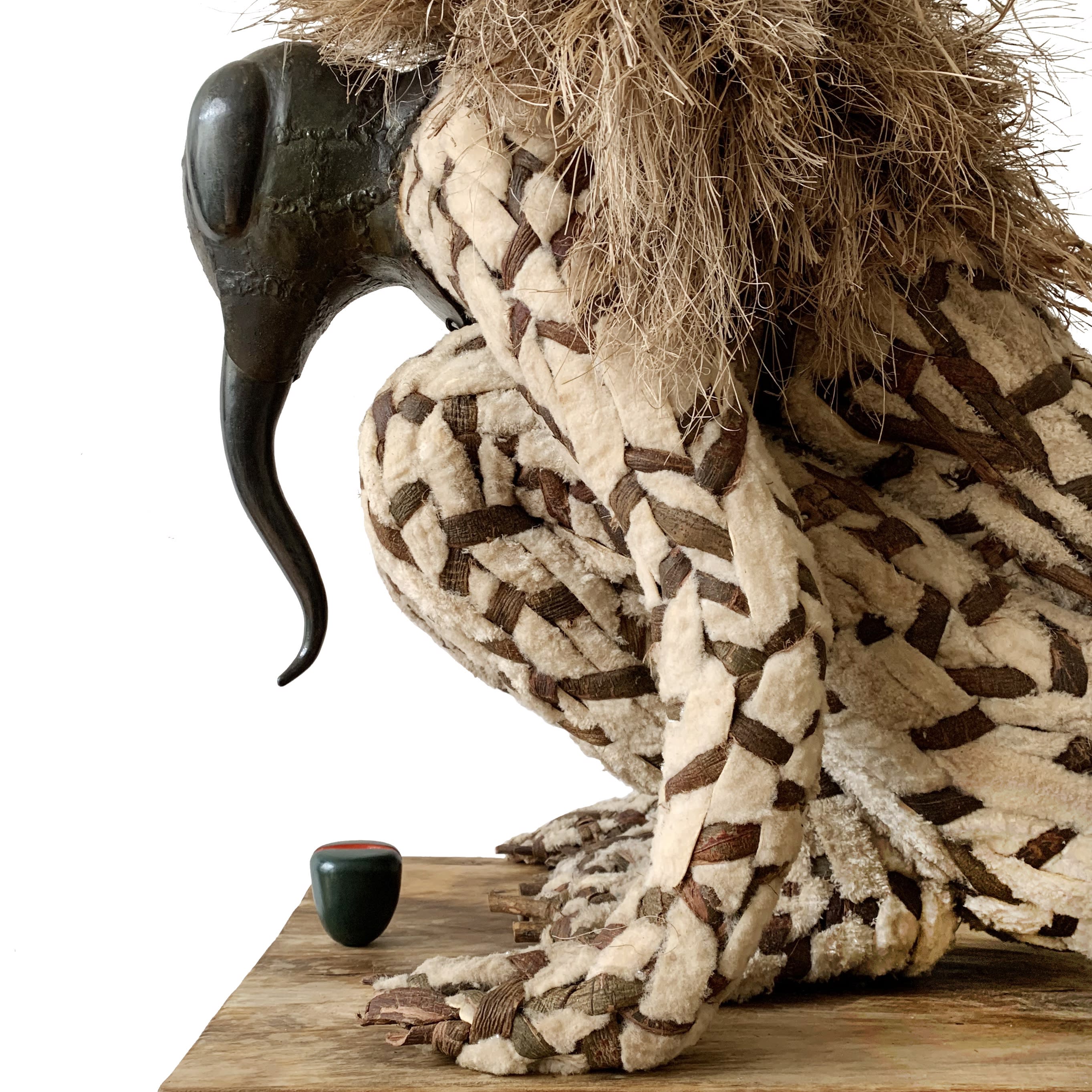What is truly sustainable, the only real model that has worked over long periods of time is the natural world- Janine Benyus
Those who have not experienced nature in all its beauty ,and therefore have not developed feelings of respect for it will be more likely to pursue their own shortsighted interest according to the principle"after the deluge" without regard for nature or grandchildren.This can be counteracted by information and explanation,on the one hand and by creating an aesthetically informed consciousness of the beauties of organic nature, on the other.
-
About the artist
Jacques DhontFascinated with processes of deconstruction and regeneration in Nature, Jacques started to incorporate more natural media as well as found objects
Jacques Dhont was born in the Congo in 1959. His parents moved to South Africa in 1967 and settled in Somerset-West. After studying painting at the University of Stellenbosch, he completed a double major in painting and sculpture at the Michaelis School of Fine Art (UCT) in 1989.
Soon after completing his degree, Jacques moved to the Overberg region where he could work close to nature, living in abandoned farm houses without electricity or running water. It was here that he first started experimenting with the creation of sculptures using woven wattle bark. (The black wattle is an alien and invasive tree species which used to grow in forests on the banks of the Riviersonderend.) Jacques mastered the weaving technique and the works created during this period speak of their inspiration of water and woodlands.
Fascinated with processes of deconstruction and regeneration in Nature, Jacques started to incorporate more natural media as well as found objects. In a series of sculptures created in 2000, bark figures play with a series of "toys" constructed with animal bones and found wire. Some of the figures wear metal masks and sheep skin is woven into the bark to emphasize the opposition between modern and ancient cultures
Jacques' fascination with eerie and ancient water creatures was demonstrated in his 2003 exhibition of relief sculptures carved from camphor wood, sometimes painted in vivid acrylic, portraying imaginary or real life forms such as trilobites, star fish and coral.
A 2006 solo exhibition dealt with different forms of blindness : blind rage, blind love, blind justice, ambition and fear. The exhibition comprised figures wrought in woven bark and skin with metal, wood and sisal.
A joint exhibition with painter Nicolaas Maritz in 2009 included various masked and winged figures as well as figures dealing with social satire. All these sculptures were made of woven bark, with metal, skin, bone and wood.
Jacques has also been experimenting with new media, particularly stone and bronze. He has completed a series of horse heads in bronze, a giant horse head in wonder stone and several sculptures in marble.
For the past couple years Jacques has been living within the beautiful Klein Drakenstein Mountains in Paarl, where he is learning to juggle his art and helping to care for his lively young children.
-
 Jacques DhontRed Bud 2, 2021Camphor wood, enamel paint222 x 47 x 47 cmR 57,500.00
Jacques DhontRed Bud 2, 2021Camphor wood, enamel paint222 x 47 x 47 cmR 57,500.00 -
Re-cognising Relation: Dhont’s Enigmatic Ecology
Dawid de VilliersThe complex weft of ideas, allusions, forms and materials ensure that Dhont’s work is not only thematically rich, but also remains enigmatic. It steers well clear of formulas and earnest slogans; moreover, despite being serious, it is always playful.
Looking at Dhont’s oeuvre, one is initially struck by what seem to be acute formal divisions: There is the work in stone, recognisably related to a tradition of classical sculpture. Then there are the remarkable works that present the human form in rough organic materials – wattle bark and sheepskin, primarily – modulated by the more formal, monumental effects of cast bronze and other metals. This quality of hybridity is also reflected in the termination of these lithe and expressive bodies in occasionally rudimentary extremities and outlandish heads. The colours are muted and weathered, earthy, the drama of the pieces to an important degree textural, from the knotted weave of the bodies to the smoothness of the strange (frequently avian) heads. We find ourselves among quasi-mythical beings, not so much recovered from any particular cultural past, as precipitated from the primal undertow of a present, quotidian world.
Then there is the intriguing work done in camphor wood, of which the new work is but the latest iteration. The earlier pieces might be described as sculptural counterparts of the detailed sketches one associates with natural history books. Precise, by and large smoothly textured and glossy (finished in varnish), they represent such specimens of natural form as a feather, a flower, a fossil. The new work seems to have developed from these, predominantly elaborating upon vegetative motifs (the title “Plant Drought Resistant” puts one in mind, perhaps, of succulents), although arguably aiming for something more unsettling, even alien. These sculpted organisms are dynamic, strikingly colourful, and of an almost-imposing size.
Given their notable height and polished solid-bodiedness, these pieces are apt to strike us, initially at least, as powerfully individualistic forms, remarkable specimens of flora transported from some temporally or spatially distant ecosystem. This, of course, is a habit of human perspective, to think in terms of individuals, whether it is a matter of subjects or objects, observers or specimens. Whether we first assume these intriguing shapes to be prehistoric or extra-terrestrial plants, or perhaps microscopic organisms magnified to formidable proportions, they command something more than a routine scrutiny. In our engagement with the world around us, we have a strong impulse to try and bring what has hitherto eluded us within the ambit of human comprehension and control. Yet sometimes this act of closing the distance may result in proximities that shock, terrify, surprise, or galvanise us. One might recall how Ernst Haeckel’s detailed drawings of sea organisms – most notably, the radiolaria – served not only the purposes of science but impacted upon architectural and decorative design, leaving an imprint upon the human world. The encounter made a change.
In the case of these new works by Dhont, things become still more intriguing when we begin to enquire into the background that is invoked in some of the individual titles – most emphatically, perhaps, in “Colonial Turn (Hula Skirt).” In this instance the parenthetical subtitle helps to clarify what is but obliquely invoked in the adjective “colonial,” which recurs in many of the titles and which may be explained in the first instance by Dhont’s interest in siphonophores, marine colonial organisms that indeed do present themselves to us as individual creatures, yet which are nevertheless composite entities made up of zooids that have banded together. The Portuguese man o’ war is a fairly familiar example of a siphonophore, although there are different kinds, many of which live in the remote deep sea, such as the Physophora hydrostatica, otherwise known as the Hula Skirt siphonophore.
Dhont’s strange beings, then, might be thought of as assemblages that but present themselves to us as singular beings, and this prompts a new look at the pieces, a re-cognition of the variations in shape and texture that have been worked into each of them. This, in turn, asks us to reflect upon the theme of symbiosis and co-existence. It is here that we may properly begin to discern the subtle and sophisticated play of the work, since in Dhont’s imagination, these marine fauna have been transformed into “drought resistant” terrestrial flora, weird plants that are imbricated in quite another pertinent contemporary thematic complex, that of water scarcity and the ecological responsibility it invokes. Intriguing analogies abound: the watery fluctuations of the drifting siphonophore colony are translated into the vertical shape of the imaginary alien flora, which is represented, in turn, by the resilient camphor sculpture, which is drought resistant by virtue of not requiring water to live, even though it continues to express life in the watery idiom of ripples and undulations, rendered in its lineaments. That a sculpture can be a plant that is in fact a siphonophore speaks to Dhont’s troubling of the rigid categories and stale assumptions that so often determine our encounter with other beings in this world, which is an important aspect of his thinking about the matrix of relation we call the ecosystem.
Particularly intriguing is the combination in two of the pieces of Dhont’s bark-and-hide work with the new camphor sculptures: if the earlier humanoid sculptures tended to evoke either forms of solipsism or, more hopefully, interpersonal relation, a piece like “What is now proved, was once imagined” (the title a near-quotation of William Blake’s famous line), quite deliberately pushes toward a consideration of the reality and possibilities of interaction with that which is other to the self. The piece is ambiguous, shrewdly arrested at the very point of encounter, with the two vertical figures caught in a moment of mutual regard. What will ensue – touch, recoil, curiosity, care, violence, or love – hinges on a gesture that is yet to follow. The striking effect is to an important degree derived from the formal and textural differences between the two figures, which creates a tension could yet be destructive or, Blake would have been likely to point out, generative. Subject to established patterns, we might anticipate the humanoid figure to start leaning in with a scalpel in the name of scientific exploration, or perhaps we imagine the green organism leaning in to invade the larger fibrous body, but there is a much wider range of possibilities in play here; in fact, a world of potential is concentrated in that bright red seed – an egg? an eye? – cradled atop the lithe green body, constituting a focal point for the tableau itself.
“The busy bee has no time for sorrow” – yet another Blakean line – takes the drama of encounter still further, and in fact seems to reach for a kind of sensuous connection of lifeforms that is fundamentally transformative of the human being. As in “What is now proved,” the humanoid figure is physically larger than the alien plant – in fact, here the difference in size is still more marked – yet its posture communicates informal curiosity, fascination, or reverie, and might even strike us as supplicatory. This might be an apt moment to recall Blake’s animus against the scientific rationalism of the Enlightenment, against any perspective on the world that would bypass the imagination – the faculty of sympathetic and spiritual apprehension – in order to present the world simply as a meaningless system of matter and force, a perspective that may in turn encourage careless exploitation. That the “busy bee” is drawn to the dehiscent green pod seems beyond question, yet the complex of associations here is likely to suggest modes of relation alternative to exploitation and destructive extraction. In this regard, also, the sexual charge that we might discover in this piece – as, indeed, in several of the others – is significant for its evocation of openness, contact, risk, care, intimacy, and generation. We are certainly encouraged to think of bees in their role as pollinators, then; perhaps, in addition, we might think of the present ecological threat to bees, or we might recall that bees, too, are colonial beings….
The complex weft of ideas, allusions, forms and materials ensure that Dhont’s work is not only thematically rich, but also remains enigmatic. It steers well clear of formulas and earnest slogans; moreover, despite being serious, it is always playful. The visual impact of the pieces consistently evokes tactile stimulation, while prompting us to wonder. They draw us in. If both “What is now proved, was once imagined” and “The busy bee has no time for sorrow” help to prime us for thinking about modes of encounter, there is in fact also the encounter that remains to be performed in the viewer’s attentive and imaginative consideration of vivid and intriguing pieces like “life,” “Colonial Turn (Protection),” “Colonial Turn (Food) III” and “red bud II.”
-

-
Those who have not experienced nature in all its beauty ,and therefore have not developed feelings of respect for it will be more likely to pursue their own shortsighted interest according to the principle "after the deluge" without regard for nature or grandchildren.This can be counteracted by information and explanation,on the one hand,and by creating an aesthetically informed consciousness of the beauties of organic nature, on the other.- Irenaus Eibl-Eibesfeldt.
-
Co-existence
-
 Jacques DhontColonial Turn Hula Skirt , 2020Camphor wood, enamel paint175.5x43x43 cmR 76,667.00
Jacques DhontColonial Turn Hula Skirt , 2020Camphor wood, enamel paint175.5x43x43 cmR 76,667.00 -

-

-
The busy bee has no time for sorrow
-
 Jacques DhontThe Busy Bee Has No Time For Sorrow, 2021Wattle bark, wood, sisal, sheepskin, metal and enamel paint79 x 53 x 70 cmSold
Jacques DhontThe Busy Bee Has No Time For Sorrow, 2021Wattle bark, wood, sisal, sheepskin, metal and enamel paint79 x 53 x 70 cmSold -
Jacques DhontThe Busy Bee Has No Time For Sorrow, 2021Wattle bark, wood, sisal, sheepskin, metal and enamel paint79x53x70 cm(C005041)R 95,834.00
-
 Jacques DhontWhat is now proved, was once imagined , 2021Wattle bark, sheepskin, metal and enamel paint147x48x45 cmR 86,250.00
Jacques DhontWhat is now proved, was once imagined , 2021Wattle bark, sheepskin, metal and enamel paint147x48x45 cmR 86,250.00 -
As in “What is now proved,” the humanoid figure is physically larger than the alien plant – in fact, here the difference in size is still more marked – yet its posture communicates informal curiosity, fascination, or reverie, and might even strike us as supplicatory. This might be an apt moment to recall Blake’s animus against the scientific rationalism of the Enlightenment, against any perspective on the world that would bypass the imagination – the faculty of sympathetic and spiritual apprehension – in order to present the world simply as a meaningless system of matter and force, a perspective that may in turn encourage careless exploitation. - Dawid de Villiers
-

-
The complex weft of ideas, allusions, forms and materials ensure that Dhont’s work is not only thematically rich, but also remains enigmatic. It steers well clear of formulas and earnest slogans; moreover, despite being serious, it is always playful - Dawid de Villiers






















